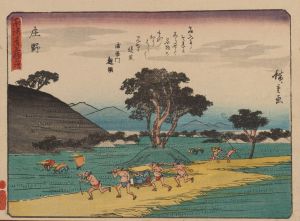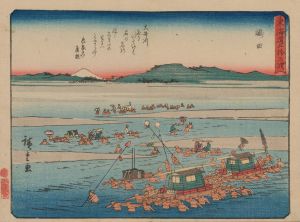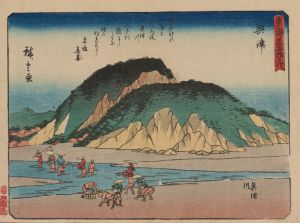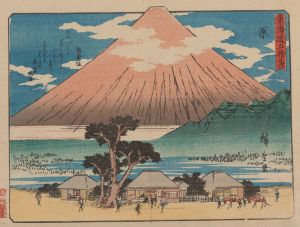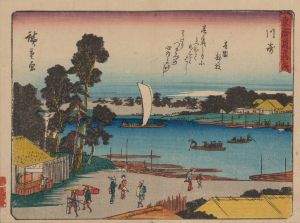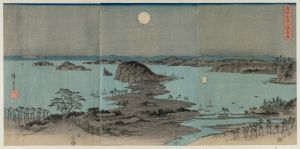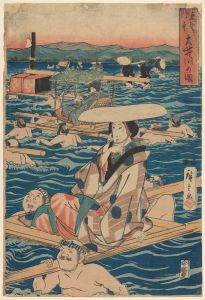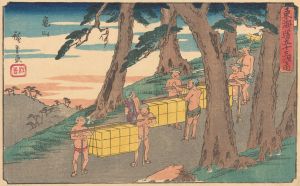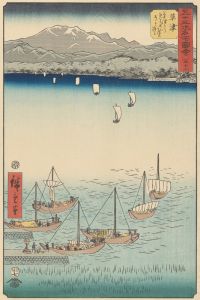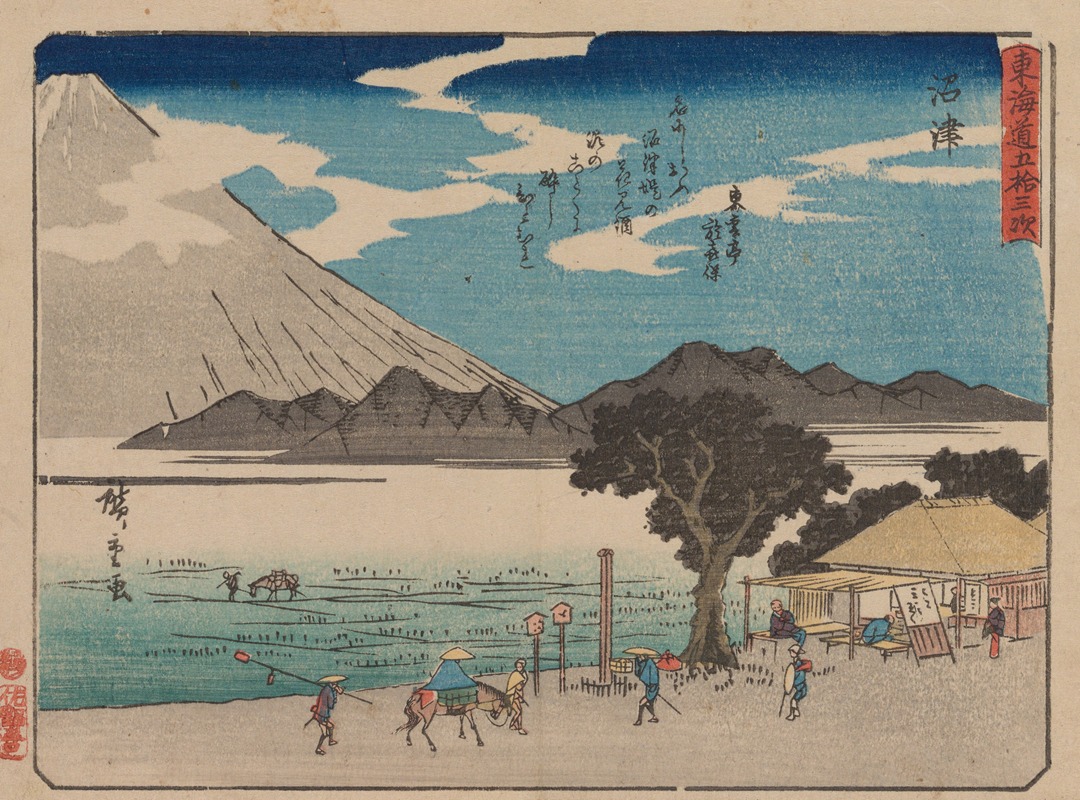
Tokaido gojusantsugi, Pl.13
A hand-painted replica of Andō Hiroshige’s masterpiece Tokaido gojusantsugi, Pl.13, meticulously crafted by professional artists to capture the true essence of the original. Each piece is created with museum-quality canvas and rare mineral pigments, carefully painted by experienced artists with delicate brushstrokes and rich, layered colors to perfectly recreate the texture of the original artwork. Unlike machine-printed reproductions, this hand-painted version brings the painting to life, infused with the artist’s emotions and skill in every stroke. Whether for personal collection or home decoration, it instantly elevates the artistic atmosphere of any space.
Tokaido gojusantsugi, Pl.13 is a woodblock print by the renowned Japanese ukiyo-e artist Andō Hiroshige. This print is part of Hiroshige's famous series "The Fifty-three Stations of the Tōkaidō" (Tōkaidō Gojūsan-tsugi), which depicts the various post stations along the Tōkaidō road, the main travel and transport route between Edo (modern-day Tokyo) and Kyoto during the Edo period in Japan.
Andō Hiroshige, born in 1797 and died in 1858, was a master of the ukiyo-e genre, which flourished from the 17th to the 19th centuries. Ukiyo-e, meaning "pictures of the floating world," typically depicted scenes from everyday life, landscapes, and theatrical subjects. Hiroshige is particularly celebrated for his landscape prints, which capture the beauty and diversity of Japan's natural scenery.
The Tōkaidō series, created between 1833 and 1834, is one of Hiroshige's most acclaimed works. It consists of 55 prints, including the starting point at Nihonbashi in Edo and the ending point in Kyoto, plus the 53 stations in between. Each print in the series illustrates a specific location along the Tōkaidō road, providing a visual journey through the varied landscapes and activities encountered by travelers.
Plate 13 (Pl.13) in this series represents the thirteenth station along the Tōkaidō road. The exact title of this station in the series is Hara (原), which is known for its stunning view of Mount Fuji. In this print, Hiroshige captures the majestic presence of Mount Fuji, often considered a symbol of Japan, with its snow-capped peak rising above the landscape. The composition typically includes travelers and local inhabitants going about their daily activities, set against the backdrop of the iconic mountain.
Hiroshige's use of color, perspective, and composition in this print exemplifies his skill in creating a sense of depth and atmosphere. The careful attention to detail and the harmonious balance of elements in the scene reflect the artist's deep appreciation for the natural world and his ability to convey its beauty through his art.
The "Fifty-three Stations of the Tōkaidō" series was highly popular during Hiroshige's lifetime and remains influential in the history of Japanese art. It not only provides a visual record of the Tōkaidō road but also offers insights into the culture and daily life of the Edo period. Hiroshige's work has inspired many artists, both in Japan and internationally, and continues to be celebrated for its artistic and historical significance.
In summary, Tokaido gojusantsugi, Pl.13 by Andō Hiroshige is a notable example of the artist's mastery in ukiyo-e landscape prints. It captures the essence of the journey along the Tōkaidō road, with a particular focus on the scenic beauty of the Hara station and its view of Mount Fuji. This print, along with the entire series, remains a testament to Hiroshige's enduring legacy in the world of art.





